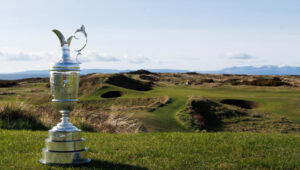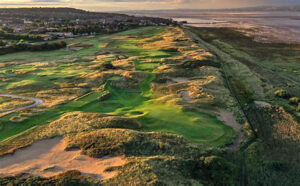Golf’s governing bodies did the sport of Golf a considerable favor by re-positioning the annual PGA Championship to a more welcoming setting in May, following the Masters, and shifting the dates of the tournament away from the hostile heat, unbearable mugginess, and unpredictable showers of August summers.
This new sequence of Major Golf Tournaments compressed the traditional schedule of events and launched a more compact, reasonable, common-sense, and logical rotation of Major Championships.
It will hold onto the public’s interest for a more realistic four months during the customary spring and summer golf seasons.
The Masters kicks off the season in April, a rite of spring that attunes the mood and anticipation of golf fans worldwide.
A more pleasant PGA Championship follows it in May.
The United States Open, Golf’s ‘Longest Day,’ remains in its traditional June location, and the Open Championship culminates the season in July.
The PGA of America relocated its tournament for practical and monetary purposes.
The weather is better in springtime, it also avoids the conflict with its self-sufficient, and very lucrative, season-ending FedEx Cup, and finally, the most critical reason, College and Professional football seasons always hold and fixate the attention of American sports fans, rendering Professional Golf moot and on the back burner.
Even Professional Golfers alter their schedules for the quintessential of all American sports.
 However, it is ironic that the oldest Championship in golf history now becomes the final contest on the Championship Golf calendar and represents the defining adornment of the season.
However, it is ironic that the oldest Championship in golf history now becomes the final contest on the Championship Golf calendar and represents the defining adornment of the season.
For the simple reason that the victor, along with the iconic claret jug trophy, is also awarded the “Champion Golfer of the Year” distinction and gets bragging rights as the reigning Champion until the Masters is held in early April.
The leading Golf Organizations’ administrating rulers have saved the best, most stirring, and entertaining tournament for last, which is imminently proper and appropriate.
The current Rota for the Open Championship consists of nine magnificent and celebrated golf courses: five in Scotland and four in England.
The Open Championship is distinctive because of the rotation’s historic nature of the golf courses and the time-honored traditions surrounding each location.
Each presents its distinguishing characteristics spread throughout the British Islands.
It also means spoiled, rich, and pampered Professional Athletes must leave their comfort zones and home bases, travel across the pond, and forsake the sameness and monotony of tranquil, serene parkland courses where they have plied their trade week in and week out throughout the never-ending tournament season.
Where they have put on display, in tournament after tournament, mind-numbing, tedious, and dull, smash and gouge gracelessness, which is the typical playing method now employed by American Professionals.
Those same Professionals, if they have the fortitude, must now venture back to the Home of Golf and participate in the sport as it was meant to be played, a game that must be practiced with skillful and patient adroitness, not the “Hit it and Find it routine, regularly played out with boring detachment and indifference one observes routinely on the PGA Tour.
 This year, the Open returned to Royal Troon, twenty-eighth on Golfweek’s list of the Greatest Classic Golf Course World Rankings but just the ninth best in Scotland.
This year, the Open returned to Royal Troon, twenty-eighth on Golfweek’s list of the Greatest Classic Golf Course World Rankings but just the ninth best in Scotland.
Considering the venerable and time-honored sites ranked ahead of it, this says a lot about Troon’s character, glamor, and allure.
The Golf Course is semi-private but eminently playable and remains accessible to all who make the crossing to Southwestern Scotland.
It is located in the bustling Scottish town of Ayrshire, abutting the Firth of Clyde and bordering the North Channel on its connecting journey from the English Channel to the Ocean.
Because the Open returns to these properties often, the courses on the Rota are well known for their history, natural settings, and links-land qualities.
Unlike American tournaments, the Royal and Ancient Golf Club of St Andrews supervises the Open Championship.
The R&A runs its event under its rules, which, as you might expect, sometimes differ between managing organizations.
Ten times the Open Championship has been contested at Royal Troon.
The list of former Champions reads like a veritable who’s who of golf legends, including Justin Leonard, Mark Calcavecchia, Tom Watson, Tom Weiskopf, Arnold Palmer, Bobby Locke, Arther Haver, Henrik Stenson, and Todd Hamilton.
The R&A typically does nothing more to their golf courses than set up the grandstands behind the putting greens and tees and maybe trim those little sod bricks that line all those bunkers you cannot see out of or over.
Mother Nature provides some irrigation when it rains, and flocks of sheep keep the grass down.
 Other than the regular maintenance on the tees and greens, links golf courses are on their own and played the way nature intended them, which is good.
Other than the regular maintenance on the tees and greens, links golf courses are on their own and played the way nature intended them, which is good.
Let the players play, and the lowest score wins.
In the infancy of golf course development, link land utilized the sometimes broad sandbars that separated agriculturally friendly inland soil from salt-infested and uninhabitable shorelines.
This land fulfills nature’s purpose by applying this hostile, windswept, and sandy links terrain, which is useless for any commercial activities other than a shield to protect arable land from the mercy of nature’s elements.
Authentic links land is treeless, formless, fluid, and steadily being shifted and re-shaped by the forces of nature, and the wind and sea are ever-present as creators.
At the same time, the inescapable elements provide a stern defense.
Weather is also a short-term factor that enters the equation.
It never fails that when unsuspecting viewers tune into Open broadcasts and see the golf course for the first time, they experience nothing they anticipated after watching American golf telecasts.
Shades of brown, yellow, and grey with lots of gorse, furze, natural areas, and extremely fast, where the golf ball runs forever, and scores go down.
When the weather is wet and relaxed, the grass grows long; the course slows down; the rough gets long and nasty, and scoring becomes more difficult.
It’s a real test that allows you to play the course as it is, not a manufactured reality show or a glorified putting contest with abundant birdies.
It is man against the course, with no slowdown and no bailouts coming down the stretch.
The winner shoots the lowest number regardless of what par is.
Just as Mother Nature always intended.
Golf was birthed over four hundred years ago on the sunbaked fields of Edinburgh amid the gorse and thistle-populated links of Scottish shores and sprinkled amidst the inlets and estuaries that abut the firths that populated the coastlines along the Irish and North Seas.
Wind and rain, sleet and hail fashioned the barren, sparse, and sandy linkslands that spawned the sport of Golf, which the present participants on the PGA Tour now befit so mightily from its bounty.
However, Golf was never meant to be, nor has it ever been, a banal practice or predictable activity.
The sport of Golf is a complex and learned skill that cannot be taught; it is only learned, embraced, enjoyed, and accepted for its vagaries, whims, quarks, and fancies.
It has changed over the ages and metamorphosed as technology, equipment, skill, and proficiency have evolved.
This makes it the most incredible, challenging, engaging, and demanding game ever conceived by man.
Most of all, it distinguishes the differences that work so well on Parkland setups: the smash and gouge currently in vogue at the highest levels of Professional Golf, contrasted with the variety of play required on links land, which will produce many different results when practiced amongst the many nuances discovered when playing on links land venues.
But know this: regardless of the conditions, the winner of the Open Championship will be the player who drives the ball well, avoids making mistakes, and dodges the massive pot bunkers lurking on every hole.
How soon have these modern-day players, with their massive wealth and privilege, forget that the sport of golf has a long, storied history and has undergone many transformations in structure, rules, and customs?
These include playing under trying and extreme conditions, avoiding mistakes, and, above all, patience with changing and diverse situations.
Golf channel’s Paul McGinley, an Irish Golf Professional of some repute and no stranger to the whims of Open Championships, took to task several contestants who bemoaned the conditions the contestants had to play within.
“Nonsense,” he said. When the wind blows and the heavens open, it’s a grind out there. It’s not much fun and very challenging, but it links golf as it should be played.”
This is precisely how it was played for devotees of Authentic Golf in the 152nd Open last week.
 Xander Schauffele rose to the occasion, handled the changing conditions, and soared above the fray in the most recent iteration of Golf’s oldest Championship.
Xander Schauffele rose to the occasion, handled the changing conditions, and soared above the fray in the most recent iteration of Golf’s oldest Championship.
For the second time this season, he shot a final round sixty-five to win a major title.
Schauffele is the first player in the history of Golf to do it twice in the same year.
Schauffele is also the first player to win the PGA and Open in the same year since Rory McIlroy in 2014 and only the third American to do so, joining Walter Hagen and Tiger Woods.
Xander ranked second in greens hit in regulation and did not three-putt all week.
Schauffele closed with a 6-under sixty-five final round that ranks among the best in British Open history, particularly the thirty-one on the back nine, and matched the tournament’s lowest score.
He won by two shots over Billy Horschel and Justin Rose, the 43-year-old from England who had to go through 36-hole qualifying to get into the field.
Schauffele, from San Diego, became the first player since Jordan Spieth in 2015 to win his first two majors in the same season.
He extended American dominance on Royal Troon, becoming the seventh Open champion in the last eight visits.
Xander Schauffele claimed the 152nd Open Championship and is now ranked No. 2 worldwide, behind Master’s Scottie Scheffler.
 He is also the defending Olympic Gold Medalist, now a two-time Major Champion, and has become a strong candidate for Player Of The Year.
He is also the defending Olympic Gold Medalist, now a two-time Major Champion, and has become a strong candidate for Player Of The Year.
I virtually attended Xander’s Championship Press Conference on Sunday evening at Royal Troon.
You may listen to that interview in its entirety below.
Podcast: Play in new window | Download


